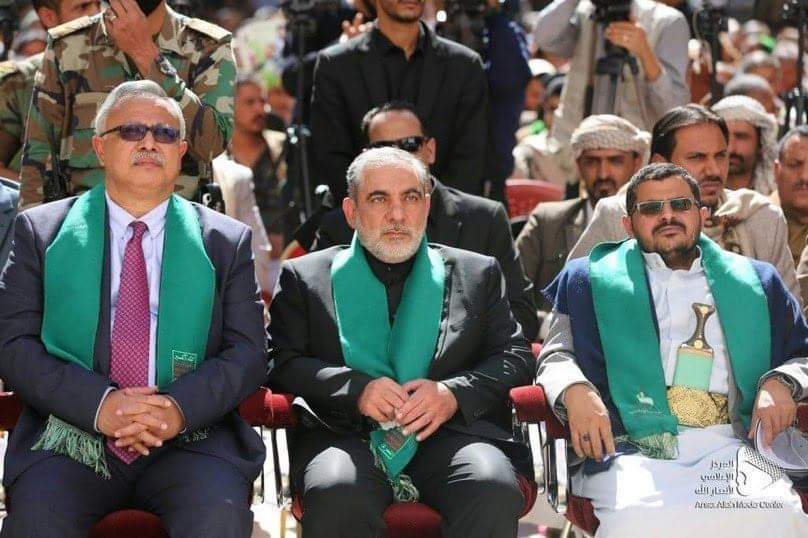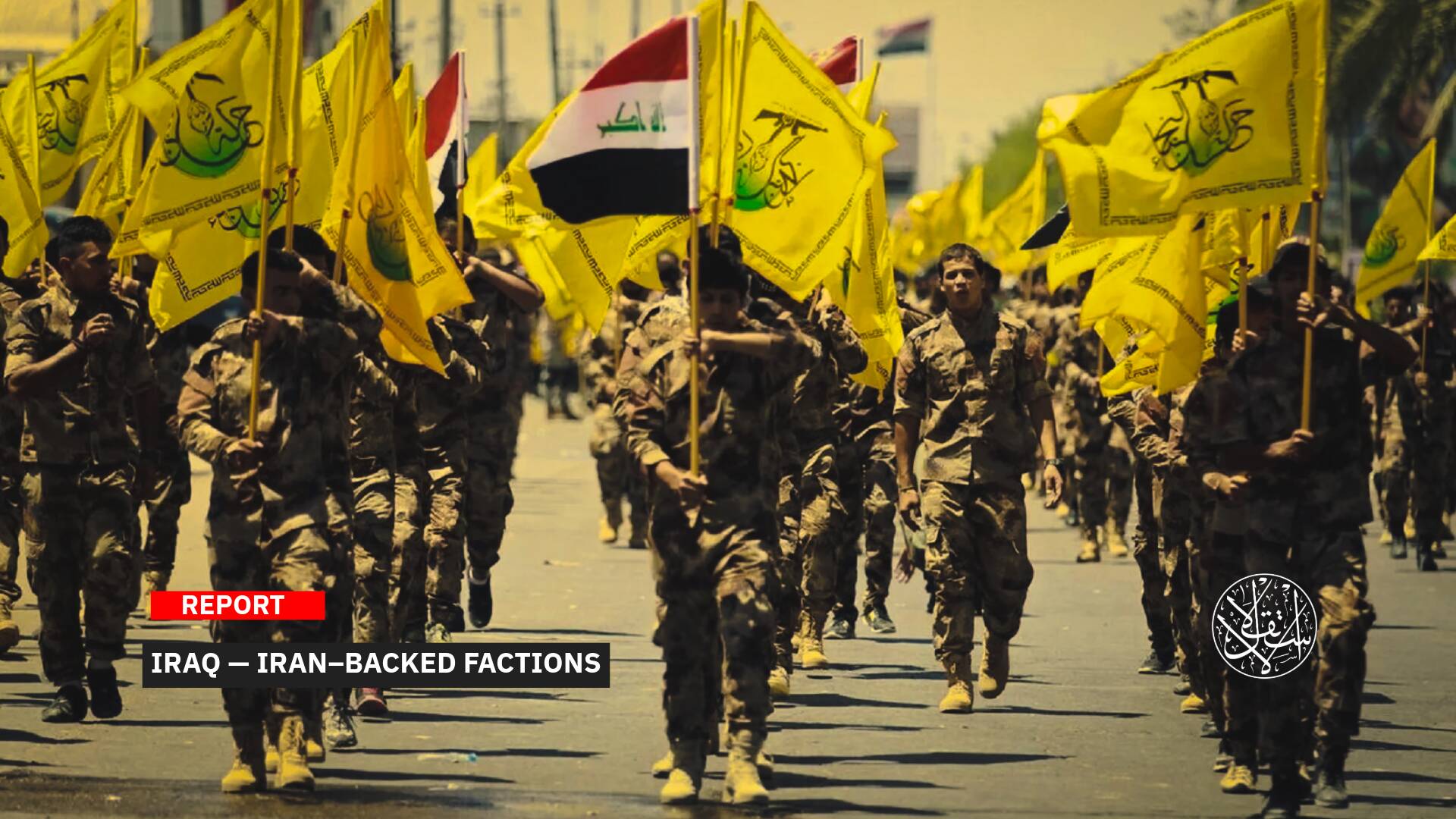“Restructuring Via Assassination”; This is the New Task of Iran’s Ambassador to Houthis in Yemen

As a diplomat, Iran's ambassador to the Houthi group in Yemen, Hassan Eyrlo, is directing military operations in Houthi-controlled areas, overstepping the boundaries of his role and authority. He is acting as if he were an absolute military ruler.
On May 14, 2021, the French newspaper "Intelligence Online" revealed that "Eyrlo" has been carrying out multiple tasks since his arrival to Sanaa months ago, including the restructuring of the "Houthi" group.
The intelligence newspaper said, "Eyrlo embarked on the restructuring and organization of the Houthi militia. He marginalizes moderate officials, such as the head of the Revolutionary Committee, Muhammad Ali al-Houthi, in order to strengthen the dominance of the group's militants, led by the Minister of Interior Abdul Karim al-Houthi and the director of the Houthi presidential office, Ahmed Hamid." .
It added, "Since taking office in October 2020, the new envoy of Iran, who is originally an officer in the Revolutionary Guards, has restructured the combat units..."
The newspaper continued: "He came on an Omani plane intended to return Houthi militia fighters who received medical treatment in Muscat. However, reports said that he arrived on a United Nations plane. Eyrlo proceeded to restructure and organize the Houthi militia."
It pointed out that "Eyrlo got rid of the independent armed groups that were trying to be within the Houthi leadership, in order to form a stronger unit, at a time when the Houthi militia was preparing for the strategic battle to control Marib, which began in February 2021."

Ideology and Function
To understand the nature of the structure carried out by Eyrlo, it must be noted that the Houthi group basically consists of several wings, most notably the "ideological wing" and what can be called the "functional wing".
The ideological wing is the solid mass of the group, and the representatives of this wing are from Saada governorate, and they are the most loyal people to the group, especially those who formed the first nucleus of the “believing youth” forum from which the Houthi group emerged in the 1990s.
This wing fought in the Houthi ranks during their war with former President Ali Abdullah Saleh in the so-called "six wars", which are the rounds of wars that lasted from 2004 to 2010.
As for the other wing, they are the Houthis who joined the group after the coup on September 21, 2014, after the group acquired the reasons for power, as a number of employees of the state’s administrative structure joined the group, especially from the “Hashemite families” who helped the group run government work, and a number of them took,later, high government positions.
It is worth noting that the Yemenis call the two wings of the Houthis (the Cave and Al-Tirmana), and they mean by "the Cave Houthis", the ideological Houthis, from Saada, who are directly affiliated with the group's leader, Abdul-Malik Al-Houthi, who disappeared in the caves of Saada for a long time.
Among the most prominent representatives of this wing is the Houthi leader, Taha Al-Madani, who was killed earlier in an air strike by the coalition, as well as his brother Youssef Al-Madani and the leader, Muhammad Al-Ghamari, who were recently included by the US Treasury on the sanctions list.
While "Tirmana" means the wealthy Houthis from whom the group benefits in conducting business in state institutions, but does not completely rely on them in its war and battles. "Al-Tirmana" are the restrooms that Yemenis build on the roofs of their homes. In which the Houthis used to take a nap as a daily ritual.
Disagreements
This division does not mean that all ideological leaders are safe from marginalization or even liquidation. According to "Intelligence Online", the head of the Revolutionary Committee, Muhammad Ali al-Houthi, is being marginalized within the structure carried out by Tehran's ambassador to the group.
Moreover, various Yemeni media sources, which could not be confirmed, reported that a major dispute arose between Eyrlo and the leader of the Houthi group, Abu Ali Al-Hakim, in a meeting that brought together Eyrlo with the leaders of the “Houthi” in mid-April 2021, after the group failed to storm Marib city.
According to the sources, Eyrlo attacked the "governor" accusing him of failing to storm Marib, and of being unfit to lead the battle, and used phrases in which he despised the man in front of the Houthi leaders who attended the meeting. The ruler responded angrily and asked him to go to the battlefield, saying to him: "Come to the battle, if you were a man", which caused the end of the meeting immediately.
After that, Eyrlo, through an emergency operations room in Sana'a, took command of the Marib battle, and the Chief of Staff of the Yemeni army, Saghir bin Aziz, had revealed on February 20, 2021 that Ambassador Eyrlo was the Iranian official leading the Houthi attack on Marib. Ibn Aziz said in statements to the "Yemen" satellite channel, that "the real leader of the Houthi battle is the so-called Eyrlo, or who is called the Iranian military ruler in Sanaa."
Eyrlo has absolute authority to restructure the "Houthi" group, strengthen Houthi leaders and marginalize others, without the Houthis having the ability to object to his decisions, as he is Iran's representative in Yemen, which imposed its vision and draw up the group's general policy and combat strategy for more than two decades.
Assassinations and Targeted Killing
During the recent period, a number of the leaders of the "Houthi" group were killed, and there is unconfirmed news that the group itself is behind these operations. Others say that Eyrlo himself had plans to get rid of some leaders who criticized the group and its policies. Announced with other leaders, the last of whom was the youth minister of the group, Hassan Zaid.
On October 27, 2020, unidentified gunmen assassinated the Minister of Youth, Hassan Zaid, while he was crossing the tunnel at the intersection of Haddah Street in the center of the capital, Sana'a.
According to followers, it is shameful that the killing of Zaid was a result of the conflict of the wings within the group, which is witnessing disagreements that are not usually announced, especially since the circumstances of the arrest and prompt assassination of the killer were suspicious, while important figures within the Preventive Security Service, which was established by the Houthis during the recent years, were trying to solve these disagreements within the Houthi leadership.
On November 22, 2013, parliamentarian Abdul Karim Jadban, who was close to the Houthis, a member of the National Dialogue Conference for the Houthi component and one of the founders of the " Al-Haqq Party" headed by Hassan Zaid, was assassinated.
On January 21, 2014, a professor of law at Sana’a University and a member of the National Dialogue Conference for the Houthi group, Ahmed Sharaf al-Din, was targeted and killed, and in November 2014, the academic figure loyal to the Houthi group, Muhammad Abdul-Malik al-Mutawakel, was assassinated in Al-Zira’a Street in Sana'a.
On March 8, 2015, Abdul Karim al-Khaiwani, a member of the National Dialogue Conference for the Houthi group, was assassinated in central Sana’a, while the perpetrators were not revealed, even though the group controls the security and intelligence services in the capital.










